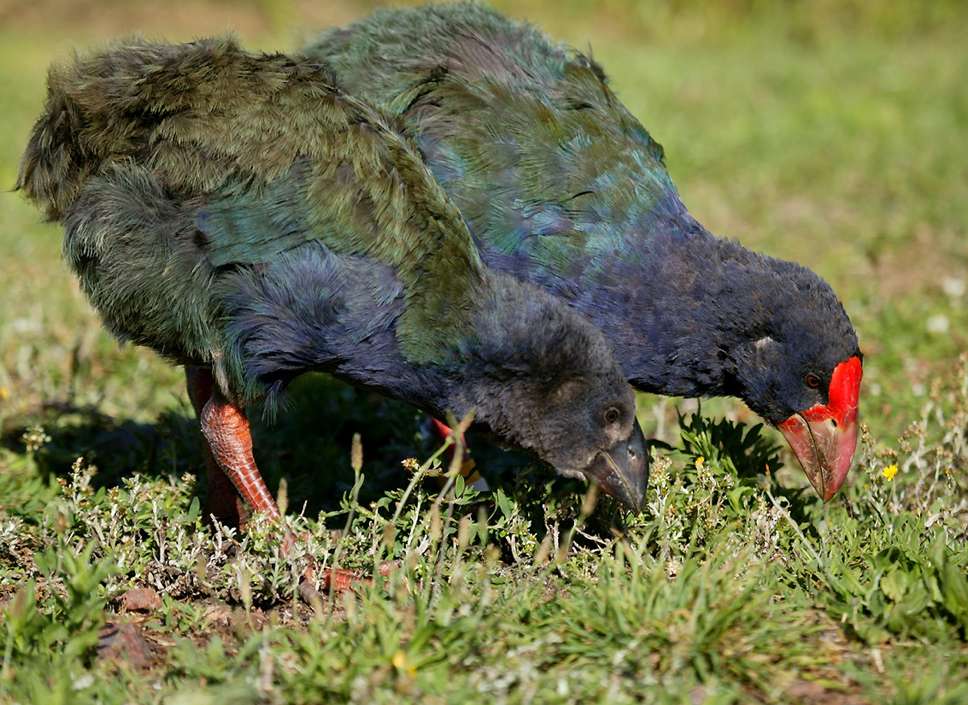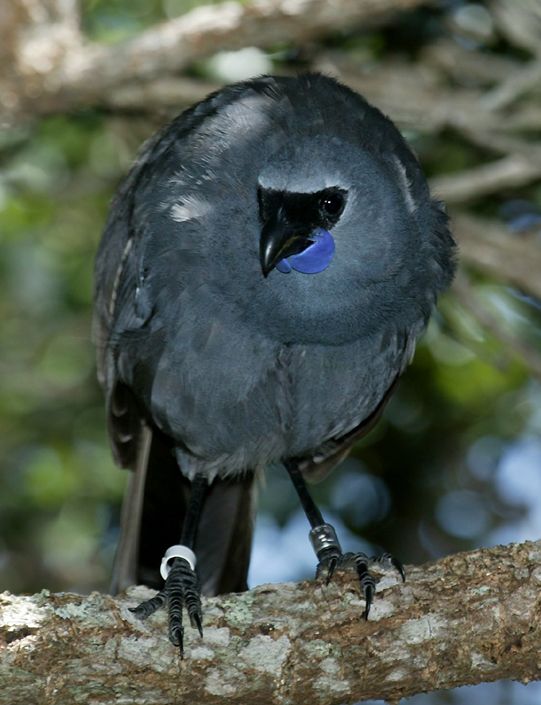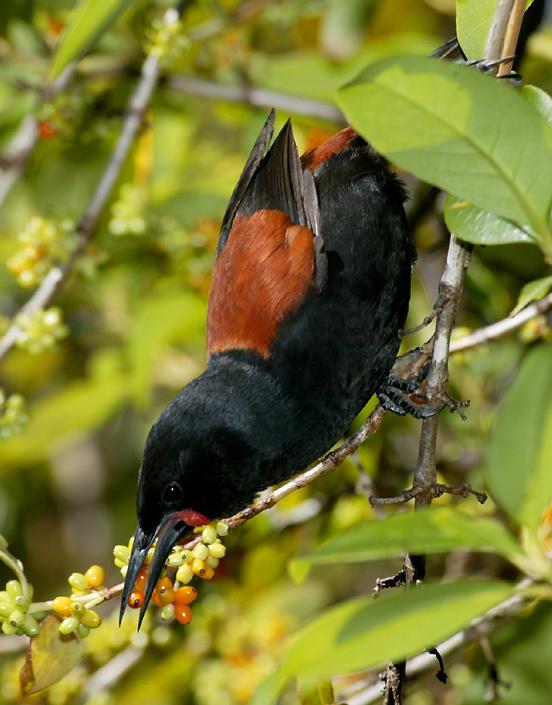Rare Birds on Tiritiri Matangi
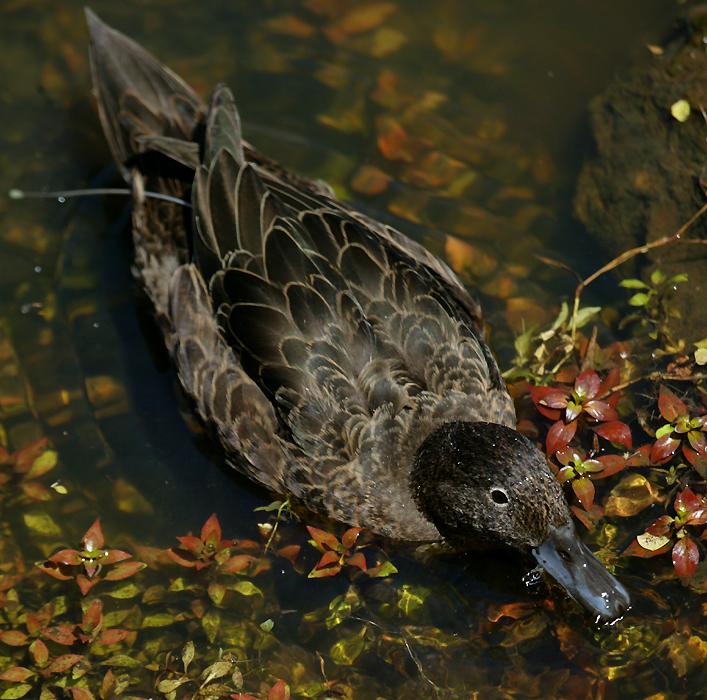
I have to admit that my main interest in birds is aesthetic. I like colourful birds, or at least birds which have an interesting shape or whose plumage has interesting patterns. Normally, then, this brown teal isn't a bird I'd photograph, since it's so dull and plain. However, since there are only 1300 of these birds left in the world, I made an exception in this case! I only saw this type of duck once and it was a bit difficult to photograph, not because it ran away, but because it came walking up to me too close to photograph with the lens I had on the camera. I guess I should have used my macro lens and got some good head shots, but instead I just ignored it and it returned to feeding in its pond. Normally they eat crustaceans and other invertebrates living in water, which I guess makes them carnivorous ducks, a pretty weird thought! The ducks on Tiritiri Matangi all carry radio transmitters so they can be tracked, which is why you can see a antenna coming from this one's back. |
|
This takahe chick reminds me of a teenager who's just gotten out of bed and hasn't had time to brush his hair yet! Although they're very rare, they're pitifully easy to observe, since quite a few of them live around the lighthouse area, and they're almost totally unafraid of humans. Although some are kept in enclosures in one or two places around the country, Tiritiri is far and away the best place to see this species. Like quite a few other New Zealand birds, they're flightless. |
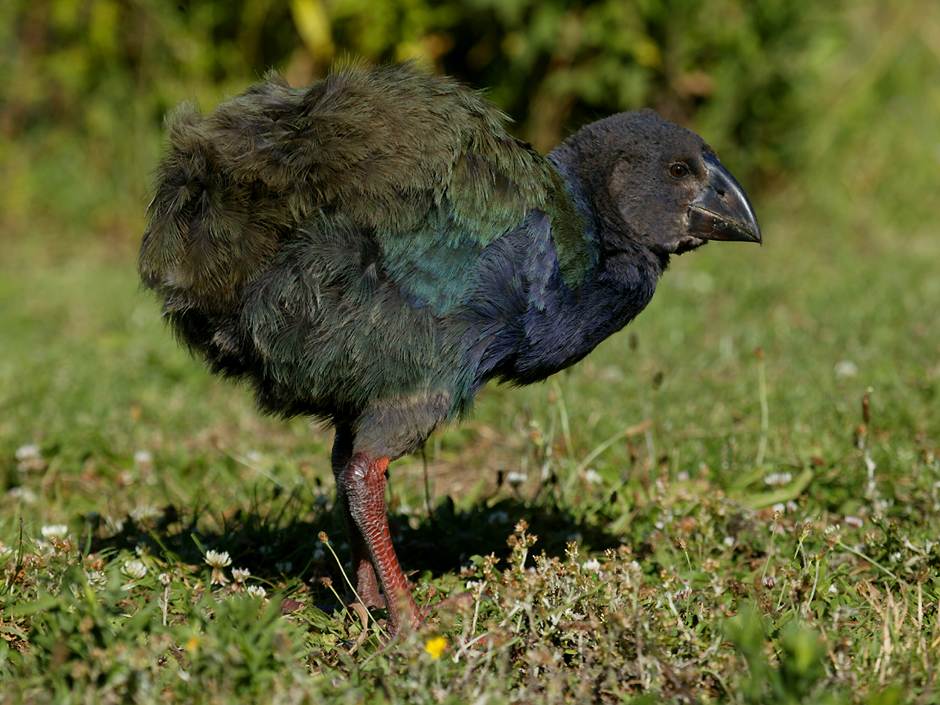 |
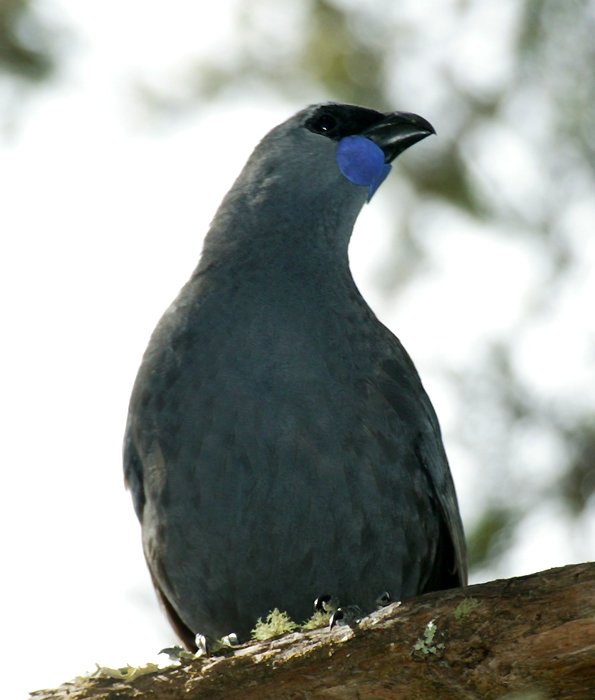
For me, the kokako is at least as exciting as the takahe. It's true that they're not as attractive, but they're also very rare, with only 1400 in the world. North Island kokakos like this one belong to a truly ancient family of birds called wattlebirds, which were around before New Zealand broke away from the ancient super-continent called Gondwanaland. Two other members of this family became extinct very recently, the South Island kokako, which was very similar to the North Island kokako, but with orange wattles, and the huia, which was hunted to extinction in the early 1900s. You can see the only other living wattlebird species, the saddleback, later on this same page. |
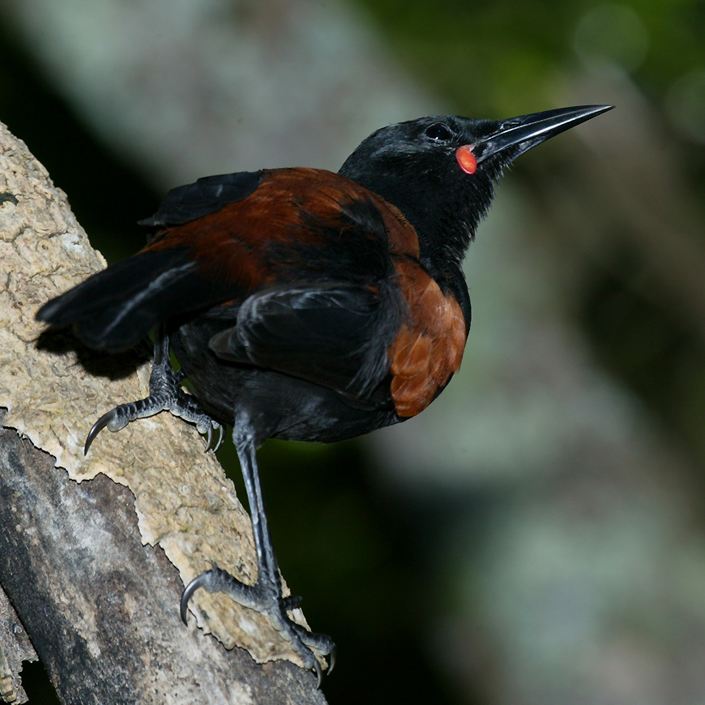
Here's that other wattlebird, the saddleback, named after the brown "saddle" of feathers. Saddlebacks are extinct on the mainland, so small offshore islands like this are the only place you can see them. |

The vast majority of New Zealanders have never seen a kiwi, even though it's the national bird and New Zealanders usually refer to themselves as "kiwis". In part this is because kiwis are nocturnal, but another major factor is the continuing steep decline in kiwi numbers because of habitat loss and, even worse, predation by cats and stoats. Although it's easy to see kiwis in the "kiwi houses" which are scattered around the country, the only place I know where they can regularly be seen in the wild is on New Zealand's third largest island, Stewart Island, which is rugged, beautiful and well off the beaten path. Little spotted kiwis have been introduced onto Tiritiri Matangi, so I was very eager to go out at night and see one. They're the smallest and rarest of three kiwi species, and have the distinction of having the largest egg of any bird in the world, relative to body weight. I went out with my roommate, an English birdwatcher called Richard Peplow, and we started searching for one of the estimated 50 kiwis on the island using flashlights covered with red plastic to dim the light. I expected to be able to track them down by following their calls, but they didn't seem to be making any. However we did come across a blue penguin high up in the forest, which started loudly braying just like a donkey! We were both determined to see a kiwi, so we pushed on and eventually we came across one on the track. It didn't seem scared, but it left the track we were on, so we moved on and came across another about 50 meters further on, presumably its mate. After snuffling around for a while, it left fairly quickly, and we called it a night. By the way, did I mention that cameras with flash can't be used around the kiwis? That's why the photo is a little dark! |
